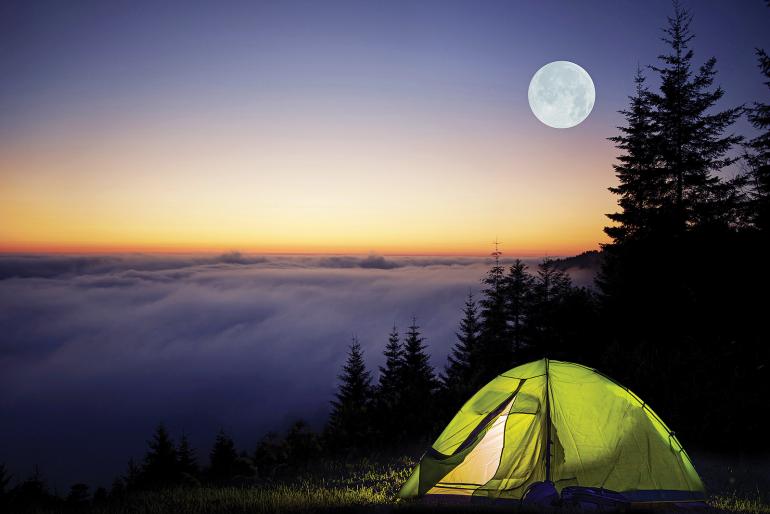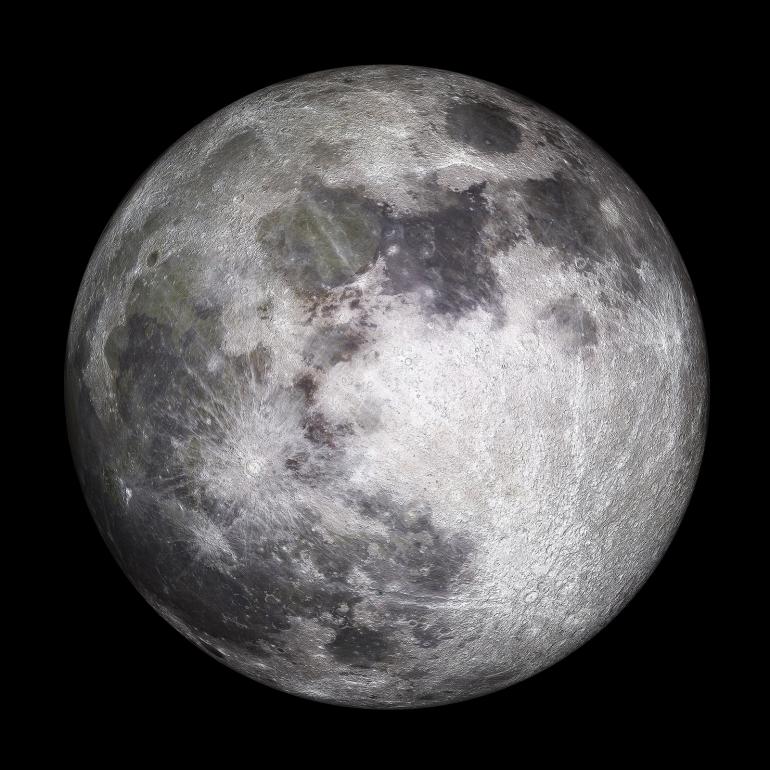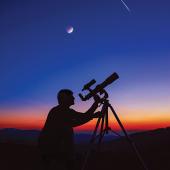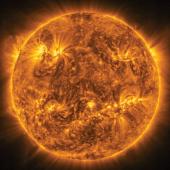Lunar Summer
Meeting the man in the moon.
In his poplar opera The Magic Flute, Mozart’s Queen of the Night is a scat-singing soprano with a bad attitude. But in the sky, it’s a royal moniker usually reserved for Earth’s natural satellite: the calm and comely moon. The placid nights of summer are a good time to admire it, and this year manages to shoehorn four full moons between the summer solstice and the fall equinox.
The moon was seen as a regal female deity by many ancient skywatchers. She was personified as the Greek goddess Selene, the Roman Luna, the Inca Mama Killa, the Chinese Chang Xi, and the Finnish moon goddess Kuu—although some cultures gave it a Y chromosome instead. For example, it was the Egyptian moon god Khonsu and Máni, the brother of the Norse sun goddess Sól. And the moon’s dark blotches form the features of a face we’ve long called the “Man in the Moon.”
The June full moon is often called the Strawberry Moon because it’s the time of year to pick ripe strawberries in the Northeast.
Those blotches were a celestial Rorschach test in many sky traditions. Both the Chinese and the Salish of the Pacific Northwest found a toad there, and the Chinese, Aztecs, Japanese, and Cree Nation all saw a rabbit. Early telescopists in turn thought they were bodies of water and called them seas—maria in Latin—but we know them today to be impact basins flooded with solidified lava.
The moon does have its celestial powers, though: gravity to raise ocean tides on Earth, and a cycle of phases that made it a timekeeper and gave us the month—a word derived from “moon.” It does not, however—when full—drive people “loony” (short for lunatic, another lunar-derived word) as has often been claimed. Thus, with no danger of going mad, we’re free to enjoy it as it sails the night sky.
The first full moon of summer this year occurs on June 21, the day after the solstice. The June full moon is often called the Strawberry Moon because it’s the time of year to pick ripe strawberries in the Northeast. The night before, you can see it lie near the bright reddish star Antares in Scorpius the scorpion, and not quite a week after, on June 27, the moon then in third-quarter phase rises after sunset next to the distant planet Saturn.
July’s full moon, on July 21, is called the Buck Moon, when deer antlers are in vigorous growth. (And the moon in its orbit will again pass by Antares on July 17 and Saturn on July 24; it will continue to buzz these beacons periodically all summer.
On September 17, the Harvest Moon rises, heralding a time of year when farmers used to use its light to linger in the fields after sunset and keep the harvest going.
August 19 hosts the full Sturgeon Moon, announcing fishing time in the Great Lakes region. It will also be a “supermoon,” lying near its perigee, or closest point to Earth in its orbit; it will thus look slightly bigger and brighter in the sky, but not enough to really notice. Note that the annual Perseid meteor shower peaks a week earlier on the morning of August 12; the best time to watch will be the night of August 11-12, after midnight when the first-quarter moon sets and the sky will be dark.
On September 17, the Harvest Moon rises, heralding a time of year when farmers used to use its light to linger in the fields after sunset and keep the harvest going. This fourth full moon of summer will have a couple of other things going for it: it will also be a supermoon, and it will get slightly eclipsed upon rising.
On that night, the moon will rise about 7:30pm local time already within the outer, lighter part of the Earth’s shadow in space called the penumbra. At 8:12pm, just seven degrees above the horizon, the upper edge of the moon will start to barely slip into the umbra, the dark inner part of the shadow. At maximum eclipse at 8:44pm, a mere 12 degrees above the horizon in the east, the Man in the Moon will look darkish around the eyes and the top of his head will be missing, immersed in the umbra. The moon will slip back out of the umbra by 9:15pm, and leave the penumbra altogether at 10:47pm, once again free to optimally light our way.
Five days later, on September 22, the equinox occurs, and the Summer of Full Moons will make way for fall. Before then, be sure to enjoy some of those silvery evenings when the Queen of the Night cruises the sky.
Jim Manning is the former executive director of the Astronomical Society of the Pacific. He lives in Bozeman.











